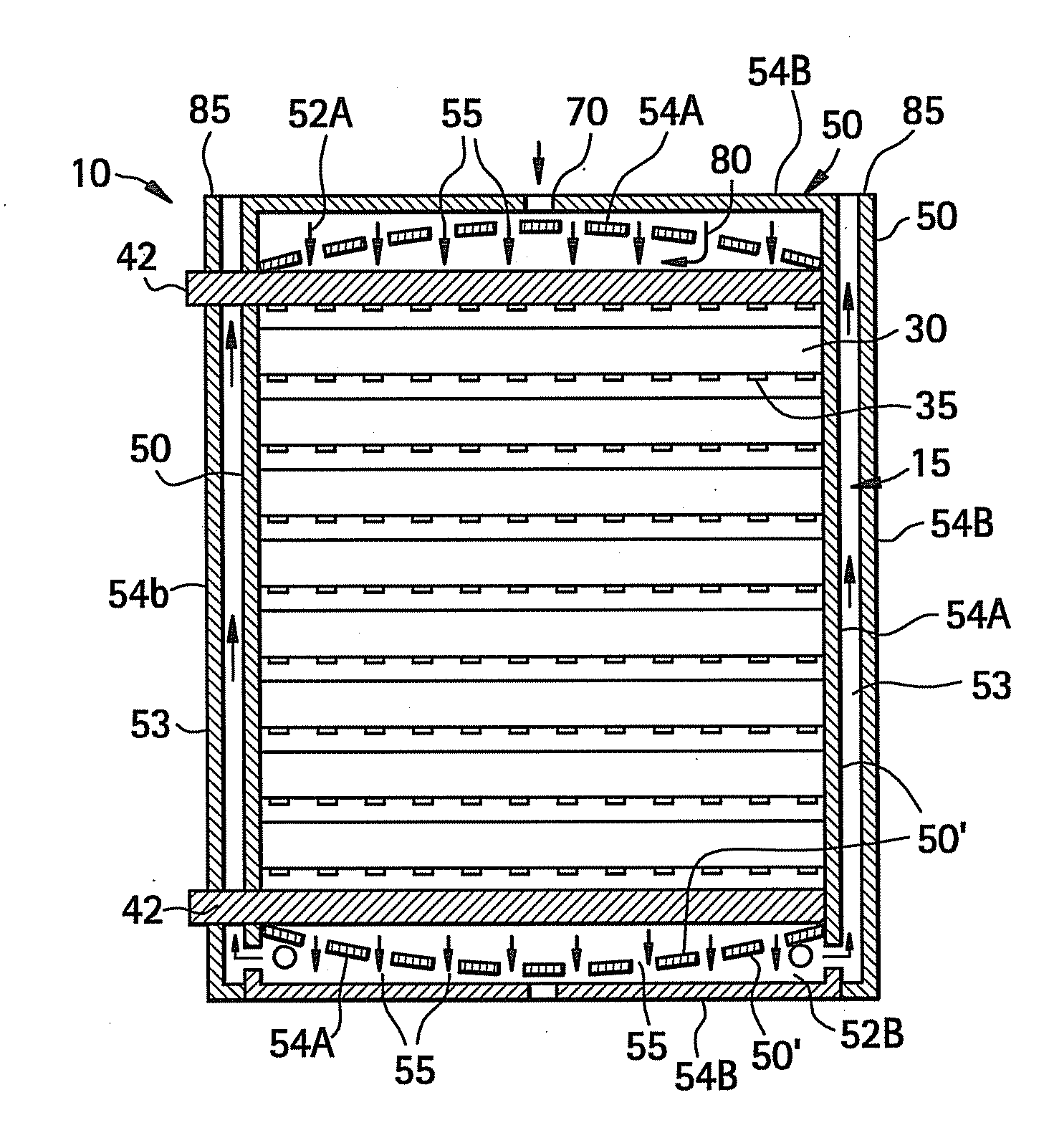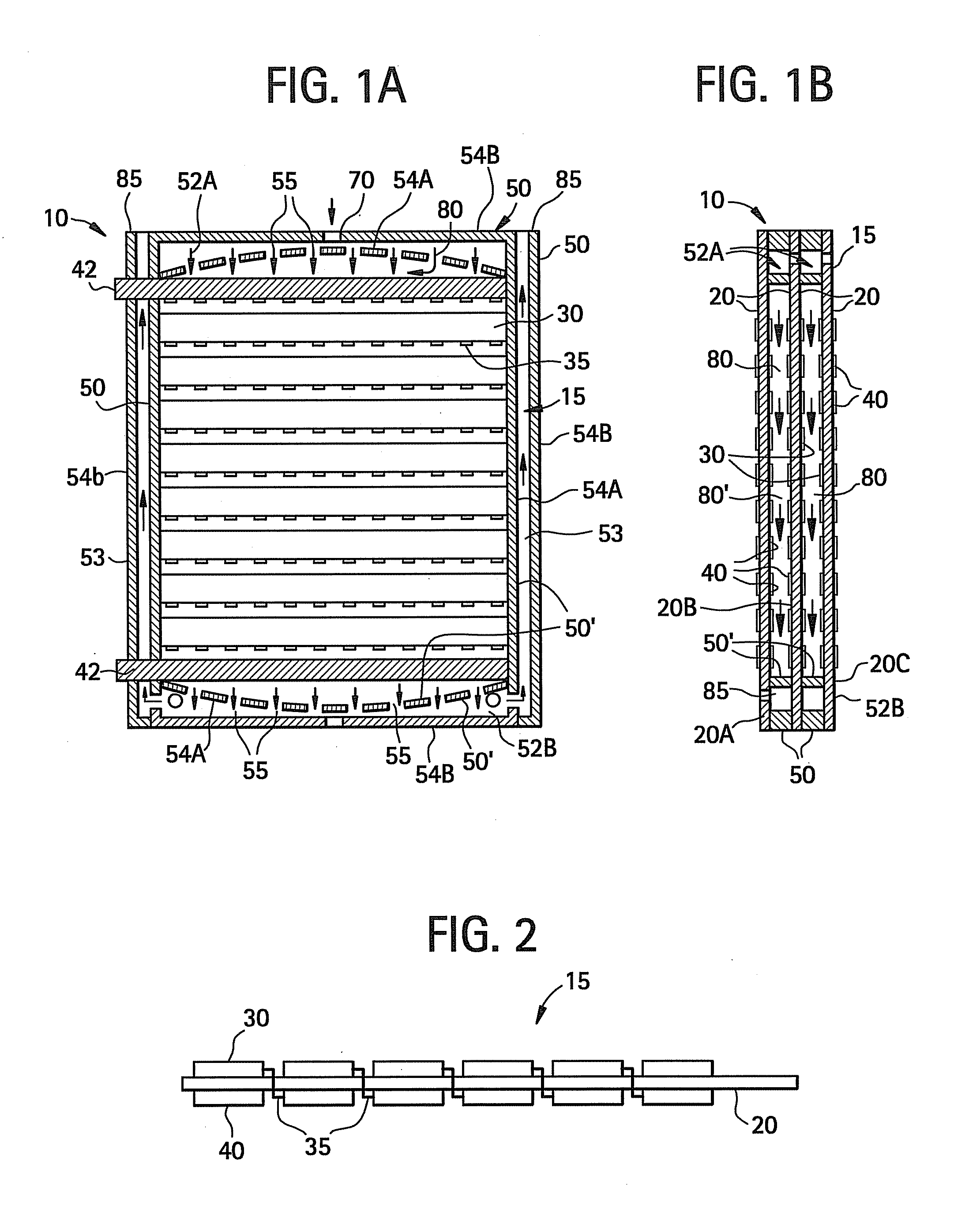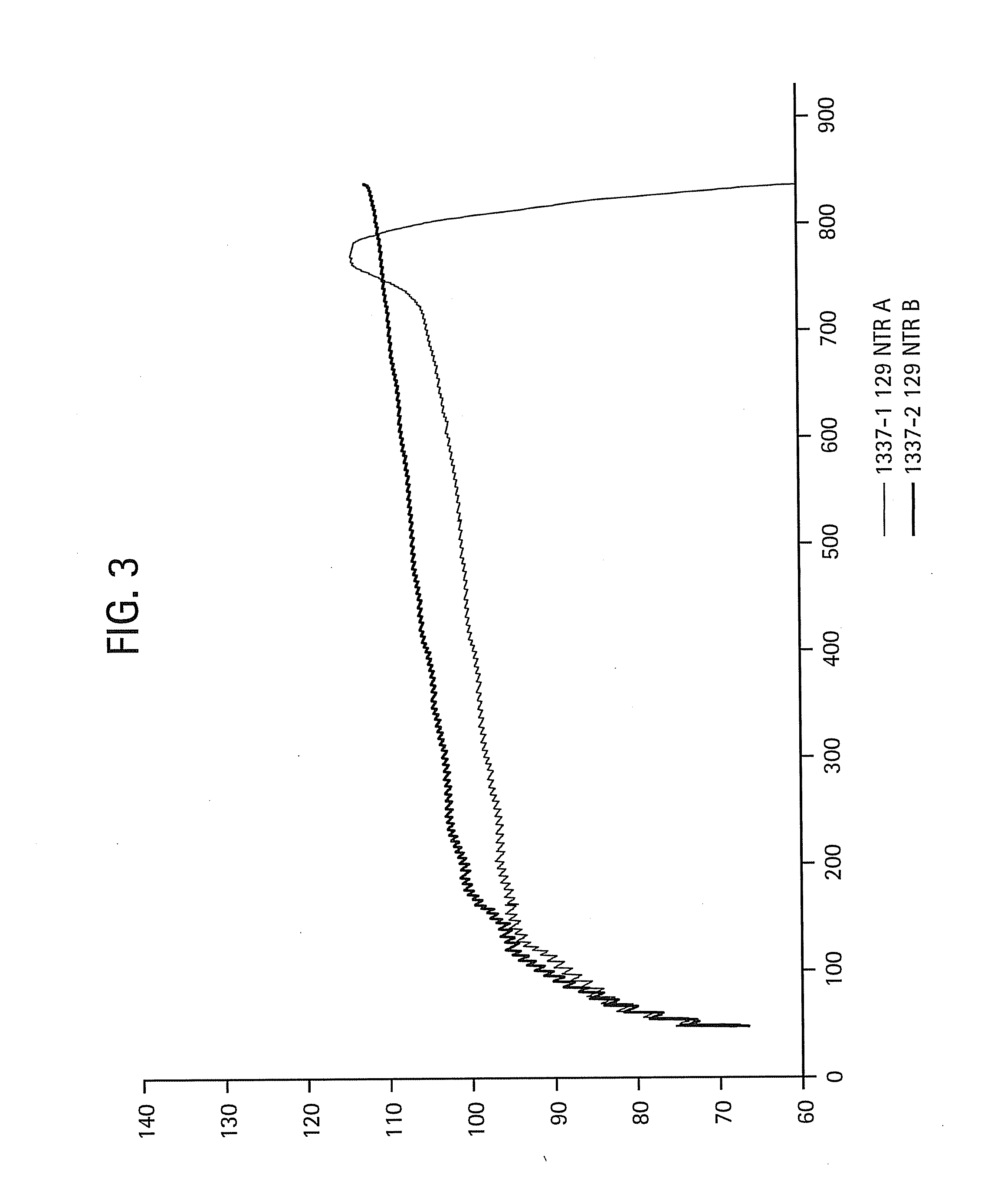Low mass solid oxide fuel device array monolith
a fuel cell and monolithic technology, applied in the field of solid oxide fuel cell array monoliths, can solve the problems of limited thermal cycling rate and start-up time performance of the conventional sofc device assembly, relative poor gravimetric power density compared to conventional power generation devices, and low gravimetric power density, so as to reduce the mass, minimize the start-up fuel penalty, and high gravimetric power density
- Summary
- Abstract
- Description
- Claims
- Application Information
AI Technical Summary
Benefits of technology
Problems solved by technology
Method used
Image
Examples
example 1
[0063]This example illustrates an ultra-low thermal mass fuel cell device array monolith 10 utilizing a plurality of frit bonded fuel cell devices.
SOFC 4-Port Monolith.
[0064]The following is a description of the process for fabrication of one embodiment of the SOFC device array monolith 10. The SOFC device array monolith 10 of this embodiment is an internally-manifolded monolith comprising of two fuel cell devices sandwiched between blank electrolyte sheets.
[0065]First, we fabricated two planar, mechanically flexible, multi-cell fuel cell devices 15 similar to that shown in FIG. 2. In this exemplary embodiment, the dimensions of the fuel cell devices 15 are 12 cm×15 cm. The fuel cell devices 15 have an unprinted border (i.e., at least a portion of the border boarder has no electrodes, or bus bars) available for deposition of patterned frit (material 50), so that material 50 does not contact the active electrode regions. Steps to fabricate the monolith (fuel cell device array monolit...
example 2
[0088]The internally manifolded device array monolith 10 of this and other embodiments of the design offers outstanding gravimetric and volumetric power density potential. The power output of the device array monolith 10 is a function of a number of parameters including cell power density, active cell area per device, and the number of devices in the device array monolith 10. Gravimetric power density is the power output divided by the device array monolith 10 mass, and is principally a function of the frit bead weight used in construction of the device array monolith 10. Volumetric power density is power output divided by device array monolith 10 volume, and is principally a function of the device to device spacing.
[0089]The device array monolith 10 shown schematically in FIG. 9 includes eight 12 cm×15 cm fuel cell devices 15 sandwiched between two 12 cm×15 cm electrolyte sheets 20. The fuel cell devices 15 and the electrolyte sheets 20 are joined by sintered frit. The contribution...
example 3
[0092]The lightweight design of device array monolith 10 is well suited for use in portable applications including mobile vehicles. For vehicle application, some of the important parameters are start-up time and fuel penalty. As noted previously, in the embodiments descried herein the start-up time is improved, due to improved thermal shock tolerance inherent with a low thermal mass mismatch between the frame and devices in the device array monoliths. Fuel penalty is largely determined by the stack heat device array monoliths 10. In a simple model which neglects heat loss from the stack as a first approximation, the following relation holds for mass of fuel required to heat the stack to operating temperature:
mf=nDAM(mCp)DAMLHVfT-T∞-(1+AFR)Cp,air
where: mf is the mass of fuel / gasoline (grams); nDAM is the number of device array monoliths in stack; (mCp)DAM is the heat capacity of device array monolith (J / K); LHVf is Lower Heating Value of the Fuel (Gasoline@ 42 MJ / kg); T is the target...
PUM
| Property | Measurement | Unit |
|---|---|---|
| Power density | aaaaa | aaaaa |
| Time | aaaaa | aaaaa |
| Flow rate | aaaaa | aaaaa |
Abstract
Description
Claims
Application Information
 Login to View More
Login to View More - R&D
- Intellectual Property
- Life Sciences
- Materials
- Tech Scout
- Unparalleled Data Quality
- Higher Quality Content
- 60% Fewer Hallucinations
Browse by: Latest US Patents, China's latest patents, Technical Efficacy Thesaurus, Application Domain, Technology Topic, Popular Technical Reports.
© 2025 PatSnap. All rights reserved.Legal|Privacy policy|Modern Slavery Act Transparency Statement|Sitemap|About US| Contact US: help@patsnap.com



